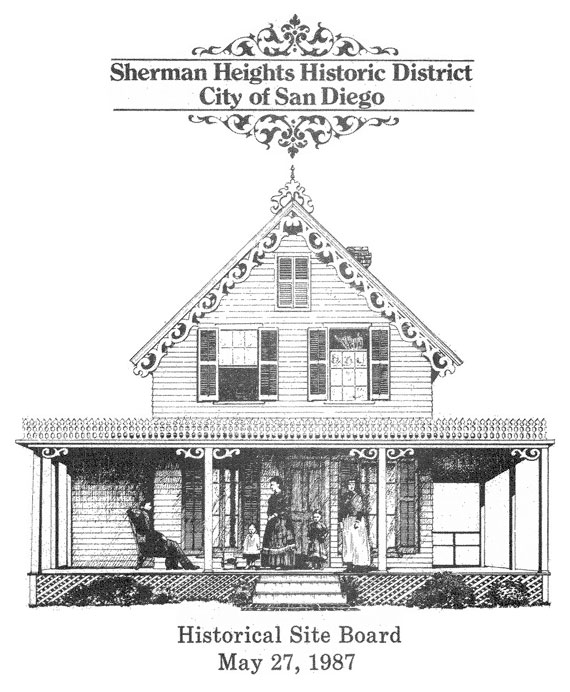|
Why Historic Districts Matter
By Bruce Coons
SOHO Executive Director
May/June 2024
 I am often asked what is a historic district? The answer, as you would expect, is layered. A historic district encompasses a significant concentration, linkage, or continuity of sites, buildings, or structures that are united historically, geographically, or aesthetically by plan or physical development, and that have a special character, historical interest, cultural or aesthetic value, or that represent one or more architectural periods in the history and development of the City of San Diego. I am often asked what is a historic district? The answer, as you would expect, is layered. A historic district encompasses a significant concentration, linkage, or continuity of sites, buildings, or structures that are united historically, geographically, or aesthetically by plan or physical development, and that have a special character, historical interest, cultural or aesthetic value, or that represent one or more architectural periods in the history and development of the City of San Diego.
But a historic district is more than a collection of buildings; it represents the story of individual communities and the distinctive character, cultural richness, and architectural legacy that collectively help define San Diego.
Don’t buy the myth that historic districts are frozen in time. They are uniquely vibrant, ever evolving neighborhoods. Historic districts safeguard the scale, character, and architectural treasures of our past while allowing for contemporary renewal and creativity within defined standards. By preserving our architectural heritage and preventing the proliferation of out-of-scale structures, historic districts protect the essence of our communities from the threat of demolition and insensitive and non-human scale development.
Across San Diego’s historic neighborhoods, we are facing an onslaught of indiscriminate teardowns. This trend not only erodes our architectural legacy but also disrupts the fabric of our communities. The establishment of historic districts helps stem this destructive tide, ensuring that future generations inherit environments and neighborhoods of enduring value, authenticity, and cultural benefit for the greater public as well as its residents.
Beyond the intrinsic value of preserving San Diego's early communities, being a part of a designated district provides owners with access to the Mills Act, which provides a property tax reduction in exchange for reinvesting in preserving and maintaining their historic resource for the public. The Mills Act is an option that makes homeownership more affordable and more accessible to a wide swath of income groups. Currently, the state Mills Act is the only such preservation incentive in San Diego.
Homes and other buildings within historic districts fall into three categories: contributing, potentially contributing, and non-contributing. Each category reflects the degree of historical significance and eligibility for benefits associated with historical designation.
Residents of historic districts must adhere to design and materials standards when making exterior alterations, such as additions or renovations. Think of it as saving “the public’s viewshed.”. While these standards ensure continuity with the neighborhood's historic character, they allow for creativity, substantial additional square footage, and individual expression, within historical guidelines.
Often overlooked, historic districts save our natural resources. Preservation is inherently eco-conscious and sustainable. As the saying goes, "The greenest building is the one already built." Remarkably, it can take anywhere from 10 to 80 years for the operational savings of a new "green" building to offset the negative climate impacts of its construction process. Demolishing just one modestly sized house produces an average of 62.5 tons of landfill waste, further underscoring the environmental cost of new construction. Multiply that tonnage by the number of homes already demolished and dumped and it's obvious that the positive environmental impact of adapting and reusing existing homes is tremendous.
We all benefit from preserving historic districts. It is one of the major factors critical to making San Diego a city that is a desirable and rewarding place to live, work, and visit.
This is a continuing dialogue about about preservation concerns that are topical in San Diego. Read the following eNews articles to learn more.
|
2025
2024
2023
2022
2021
2020
2019
2018
2017
2016
2015
|

